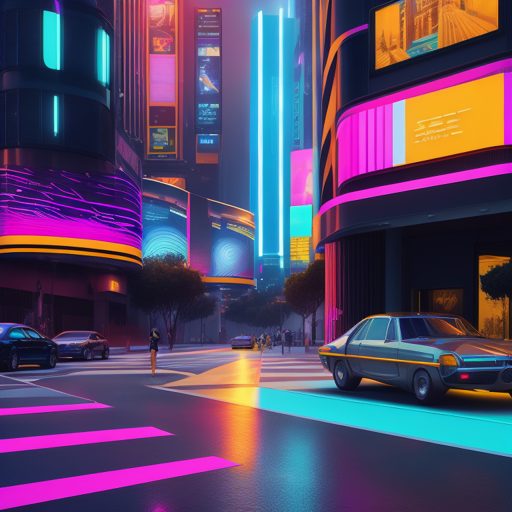
Cities Go Car-Free, Biometrics Show!
Recommended for Middle Grades
Did you know that advanced technology can help us design better cities? Scientists are using special tools to track how people’s eyes move and their facial expressions when they look at different places.
These tools are called biometric and machine learning tools, and they are helping us understand how people experience cities. This information can help us create cities that are fair, sustainable, and healthy for everyone.
Researchers, like the ones at Tufts University, are collecting data from people’s faces in real-time using webcams. They are analyzing how people’s faces show different emotions when they look at different parts of a city. For example, they want to know if people smile or what catches their attention first.
This kind of information is very valuable because it can help us design cities that people will love even before we start planning them. The researchers at Tufts University have been studying how people’s faces and eyes react to different urban scenes. They found something interesting. People don’t like looking at cars in cities.
Traditional city planning usually asks people what they think about a place through surveys or interviews. But now we can use biometric tools to understand people’s true feelings. This can change the way we design cities and make them even better.
Biometrics Shape Cities
- Previous studies have shown that car-free cities are good for us, but now we have even more evidence. And using biometric tools, the researchers found that people feel happier when they see streets without cars. This is important because it means that when we plan cities without cars, people are more likely to have positive emotions and enjoy their surroundings.
- In one study, the researchers used special software to track people’s facial expressions and eye movements. They showed participants pictures and videos of a street in Cambridge, Massachusetts, both with and without cars. And found that people expressed more positive emotions when they saw pictures without cars. They also noticed that people’s eyes spent more time looking at the areas where cars were present. This shows that cars can catch our attention, but they also make us feel less happy.
- Scientists and urban planners all over the world are using biometric tools to understand how people react to different city designs. They are learning that buildings with interesting designs and spaces that encourage people to walk are the most effective. Other studies have shown that natural elements like trees and plants make us feel more relaxed and happy. Car-free spaces are important because they help bring communities together.
- In cities like Boston, the mayor has already started closing streets to cars. These car-free streets have been very successful. Especially during the COVID pandemic when people needed safe places to go outside. Other research has shown that car-free cities are healthier for us, and now biometric tools are helping us understand why.
- Humans have evolved to be aware of their surroundings and to feel safe. We pay attention to things like hand motions, faces, and voices to decide if we are in a safe or dangerous situation. In social situations, we feel safer when we see familiar faces and friendly expressions. In a city with lots of cars, it’s harder for us to feel safe and friendly. Our brains prefer natural elements like trees because they remind us of the environment we are used to. Car-free spaces help us relax and enjoy our surroundings.
- The research on car-free cities is still ongoing, but it is clear that they are important for building strong communities. The use of biometric tools is helping us understand the benefits of car-free cities even more. In the future, we can expect to see more cities without cars, where people can feel happier and healthier.
Similar Stories
Watch a video
To gain insights into facial recognition and its applications, check out this informative video uploaded by “Interesting Engineering” on YouTube.
Curious Times is a leading newspaper and website for kids. We publish daily global news aligned to your learning levels (also as per NEP 2020): Foundational, Preparatory (Primary), Middle and Senior. So, check out the News tab for this. We bring kids’ favourite Curious Times Weekly newspaper every weekend with top news, feature stories and kids’ contributions. Check out daily JokesPoke, Tongue Twisters, Word of the Day and Quote of the Day, kids need it all the time.
ME – My Expressions at Curious Times is your place to get your work published, building your quality digital footprint. And it is a good way to share your talent and skills with your friends, family, school, teachers and the world. Thus, as you will step into higher educational institutes your published content will showcase your strength.
Events, Quizzes and Competitions bring students from over 5,000 schools globally to participate in the 21st-Century themes. Here schools and students win certificates, prizes and recognition through these global events.
Sign-up for your school for FREE!
Communicate with us: WhatsApp, Instagram, Facebook, Youtube, Twitter, and LinkedIn.
0 (Please login to give a Curious Clap to your friend.)
